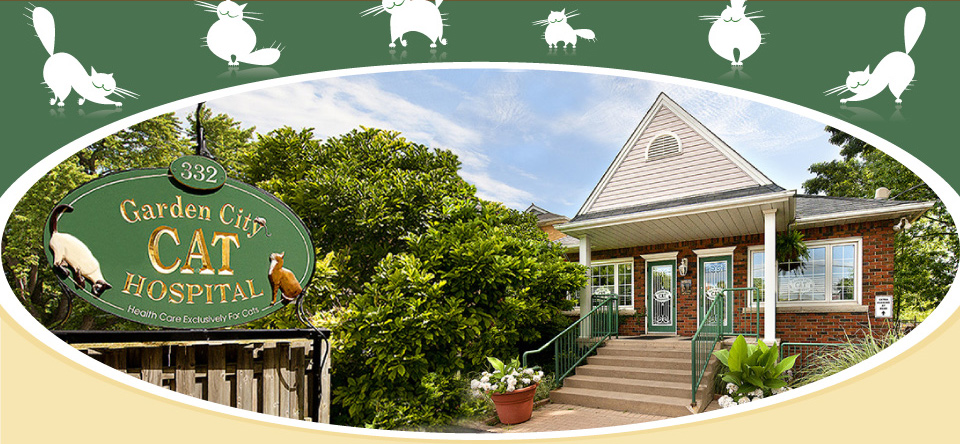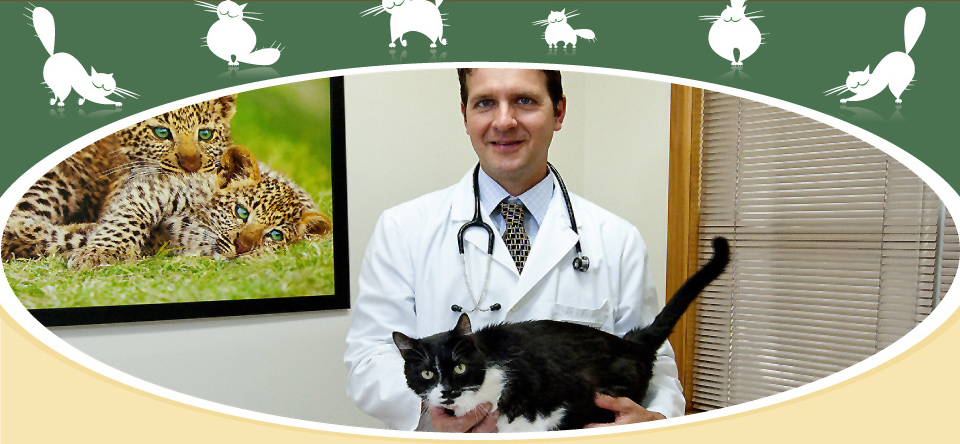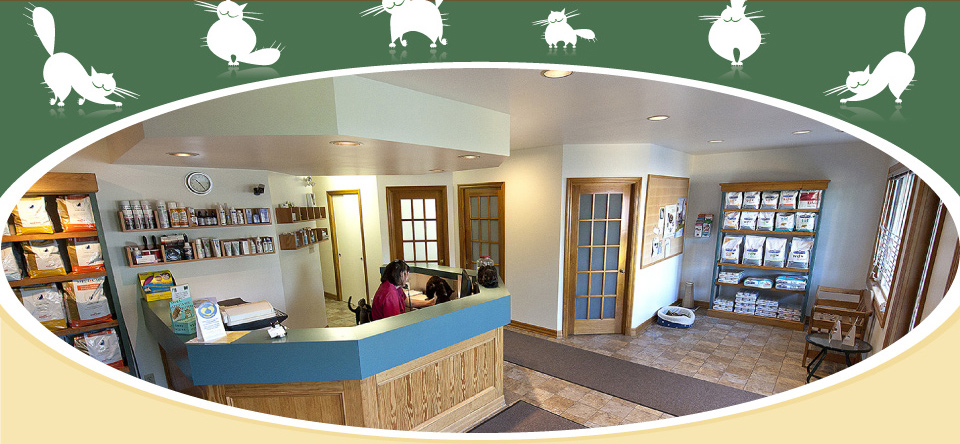For more details on our services select one below and a description will show up below. Of course, you can call us if you have any questions.
Many clients are surprised by the number of services that the hospital is designed to offer. Aside from the routine care that most people expect, we are prepared to care for many of your pet’s non-routine medical and surgical needs as well.
Consultations/ Examinations
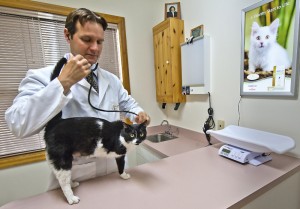 This is when we take the time to discuss the concerns, worries or questions you may have about your cat’s health. To help us do this, we book 20 minute appointments (30 minutes for new kittens whose owners often have more questions).
This is when we take the time to discuss the concerns, worries or questions you may have about your cat’s health. To help us do this, we book 20 minute appointments (30 minutes for new kittens whose owners often have more questions).
We recommend annual physical examinations for all of our pets. Having your pet examined annually is crucial to maintaining your pet’s good health. Check-ups are important because they provide the opportunity to prevent disease or detect them early should they be developing. Unfortunately, some pet owners underestimate the value of these visits because their pets appear to be healthy to them. While it is very important to monitor your pets closely at home, it often takes the training of a veterinarian to pick up on those early warning signs of disease. Remember, your pets cannot tell you when they are feeling poorly and often do not complain until the disease is quite advanced. Detection of disease or behavioural problems early in their course of progression provides the best opportunity for successful therapy, often with less expense.
An unfortunate reality is that our cats age faster than we do; for every year that passes for us, 5 to 7 years have passed for them. Imagine the changes that can occur in their bodies in just one year. For this reason some older pets may even benefit from examination more than once a year, every 6 months for instance. So next time you get that annual reminder call from your veterinarian, remember it is actually a five year (in human years) check up to your pet.
Vaccination Programs
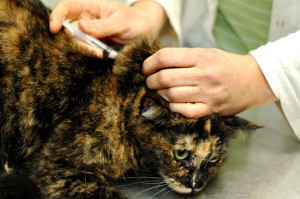 We do believe in the importance of vaccines. Vaccination has, without a doubt, been the cornerstone of all preventative medicine in humans and animals.
We do believe in the importance of vaccines. Vaccination has, without a doubt, been the cornerstone of all preventative medicine in humans and animals.
There are many diseases that your pet will be exposed to that can cause serious illness and even death. These diseases can be spread to your dog or cat by contact with other pets, sniffing the grass where other animals have been or drinking contaminated water. You can even bring the diseases home on your hands, clothes or shoes thereby putting animals that spend most of their time indoors at risk.
Because the protection provided by a vaccine gradually declines over time, regular booster vaccinations are needed to ensure ongoing immunity from disease.
During your pet’s annual physical examination we will review your pet’s lifestyle and the likeliness of exposure to various contagious diseases. Together with you, we will select only those vaccines we believe necessary to keep your pet healthy and fit. It is our goal to individualize your pet’s vaccination program to his or her unique lifestyle and needs.
Preventative Health Care
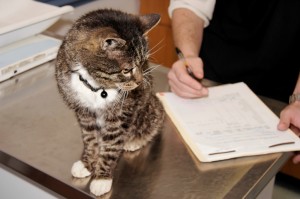 The intelligence of the saying ‘an ounce of prevention is worth a pound of cure’ cannot be argued.
The intelligence of the saying ‘an ounce of prevention is worth a pound of cure’ cannot be argued.
For our pets this means regular grooming to avoid disease of the skin, ears, eyes and paws; dental care using special foods, brushing teeth or routine scaling and polishing; heartworm, flea and parasite prevention; proper nutrition to avoid obesity and nutritional deficiencies; and training and exercise to prevent boredom and behaviour problems. Because we are keenly aware of the special bond you share with your pet, we will spend the time to review all of this and more.
Nutrition Counselling
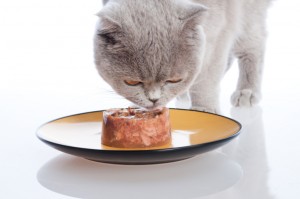 Today we don’t merely think of diet in terms of a source of energy but understand that it is much more than that. Through years of intensive research we understand that good nutrition is akin to preventative medicine, proper nutritional practices avoid a multitude of disease problems.
Today we don’t merely think of diet in terms of a source of energy but understand that it is much more than that. Through years of intensive research we understand that good nutrition is akin to preventative medicine, proper nutritional practices avoid a multitude of disease problems.
We now understand that it is no longer good enough to feed our pets the largest and cheapest bag of pet food we can find. As your pet’s health care provider, veterinarians are the best source of information on the correct foods to feed your pet in health and illness.
Behaviour Counselling
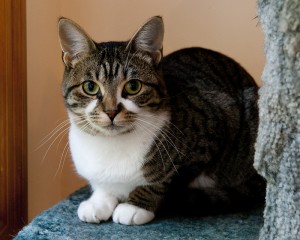 Often the problem we see with our pets has nothing to do with a physical ailment but it is behavioural. Some behavioural problems can be so serious that they threaten the life of the pet when a frustrated or fearful pet owner can no longer cope with the difficult or aggressive actions of their pet and are considering euthanasia.
Often the problem we see with our pets has nothing to do with a physical ailment but it is behavioural. Some behavioural problems can be so serious that they threaten the life of the pet when a frustrated or fearful pet owner can no longer cope with the difficult or aggressive actions of their pet and are considering euthanasia.
Veterinarians are well trained in pet behaviour and are prepared to counsel and teach pet owners on how to treat their pet’s fear, anxiety or aggression based problems. At times medications may even be prescribed as part of the treatment protocol.
Behaviour consultations are booked in 30 minute increments, the first appointment is often one hour long. We usually have pet owners fill out a behaviour questionnaire at home and drop it off several days before the consultation for the doctor to review. If you are having behavioural problems with your pet, call our receptionist to book a behaviour consultation.
Geriatric Wellness
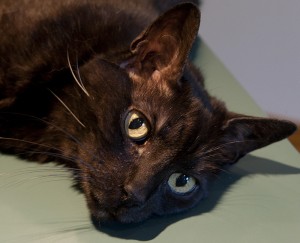 Although your older pet may still be very active and healthy, his or her body has become more susceptible to chronic kidney disease, thyroid disease, diabetes, arthritis, heart disease, failing vision and hearing, and a general weakening of the body. Instead of waiting until the appearance of one or more of these diseases, we can choose to be vigilant and to focus on all of the things we can do to make his or her senior years happy, healthy and enjoyable for the both of you.
Although your older pet may still be very active and healthy, his or her body has become more susceptible to chronic kidney disease, thyroid disease, diabetes, arthritis, heart disease, failing vision and hearing, and a general weakening of the body. Instead of waiting until the appearance of one or more of these diseases, we can choose to be vigilant and to focus on all of the things we can do to make his or her senior years happy, healthy and enjoyable for the both of you.
There is a lot we can do to help pets age well, provided we know what is happening in their bodies. More frequent check ups and simple blood and urine tests will help us keep ahead of the aging process.
We strongly encourage everyone with cats 10 years of age or older to schedule a wellness check up. We will give your pet a thorough physical examination, discuss your concerns, and perform a wellness test on a small sample of blood and urine.
Extended Kitten Visits
 Bringing home a new kitten is a very exciting event for most people. But this adorable, soft and cuddly little creature is entirely dependent on its new family for food, water, shelter, training and healthcare. That is a lot of responsibility, particularly if this is the first pet. We know you may have a lot of questions and we want to take the time to answer all of them. So to help you get off to the right start, we will schedule longer appointments for our new kitten clients.
Bringing home a new kitten is a very exciting event for most people. But this adorable, soft and cuddly little creature is entirely dependent on its new family for food, water, shelter, training and healthcare. That is a lot of responsibility, particularly if this is the first pet. We know you may have a lot of questions and we want to take the time to answer all of them. So to help you get off to the right start, we will schedule longer appointments for our new kitten clients.
There is an abundance of information available for new pet owners but with so much information, and much of it conflicting, knowing where to turn can be overwhelming. This is why we, at Garden City Cat Hospital, have designed an information package for our new pet owners to take home. In it we have included everything we believe you need to know about your new furry friend. The information has been broken down into categories for quick access. Each category is further simplified into a question and answer format. If you have a question, we are sure we have provided you with the answer.
Dental Care
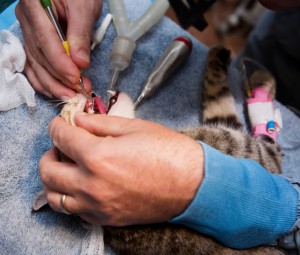 Would you believe that the most common disease seen by veterinarians is dental disease? Almost 80 percent of cats develop periodontal disease by 5 years of age. Periodontal disease is the infection of the tissues that surround the teeth, resulting in the breakdown of the attachments of the teeth to the sockets.
Would you believe that the most common disease seen by veterinarians is dental disease? Almost 80 percent of cats develop periodontal disease by 5 years of age. Periodontal disease is the infection of the tissues that surround the teeth, resulting in the breakdown of the attachments of the teeth to the sockets.
The symptoms of periodontal disease include bad breath, swollen, red, tender gums and an accumulation of tartar on the teeth. In the more advanced stages, the gums may recede, bleed, and become painful. More tartar develops that traps pus beneath the gum line. As the abscess deepens, the teeth loosen in their sockets. Although we tend to think of periodontal disease as an oral problem, the whole body quickly becomes affected. Bacteria from infected gums gain access to your pet’s blood stream, reaping havoc with the immune system, heart, lungs, liver and kidneys. Tiny micro-abscesses form in these organs causing permanent damage. Blood and urine tests can be used to detect defects in these organs possibly resulting from dental disease.
Once established, periodontal disease cannot be cured. It is only through veterinary intervention under a general anesthetic and post surgical home care that periodontal disease can be controlled.
Your pet’s teeth should be examined by a veterinarian annually. Unless you have managed to keep your pet’s teeth clean, your pet will likely require a dental cleaning and polishing at some point. This procedure is very similar to the cleaning we receive at our dentist except the animals must be under a general anesthetic to do the cleaning properly. Some people are concerned about the requirement of a general anesthetic; fortunately the anesthetics veterinarians use today are very safe and well tolerated by our pets, even the very old ones.
An ultrasonic scaler removes the rock hard tartar from the teeth. Then the technician uses hand scaling instruments to remove the finer particles of tartar below the gum line. Once the teeth are cleaned, they are polished to remove the fine dents in the enamel that are created by the bacteria. Having finished her job the technician hands off the reins to the veterinarian to examine the teeth. Each tooth and gum area is carefully examined for inflammation, gingival pockets, decay, loosening and infection. Devitalized teeth are extracted using elevators and sometimes the high speed dental drill.
Most pets go home the same day, often within a few hours of the dental procedure. To encourage you to brush your pet’s teeth in the future, we will give you a tooth brush, sample of pet tooth paste and home care instructions.
Once your pet has recovered from the dentistry, usually within a few days, your job begins. Preventing the build up of plaque, tartar, and the development of gingivitis again requires a daily effort. Brushing your pet’s teeth is the best way to keep them clean. Unfortunately, not all of our furry friends will cooperate with this harmless procedure. For those pets, we rely on products like dental diets, special chews like C.E.T. dental chews, and Maxiguard oral cleansing gel to help us out. As part of our commitment to your pet’s oral health, we would be happy to help you begin a simple prevention program.
Surgery, Anaesthesia and Pain Management
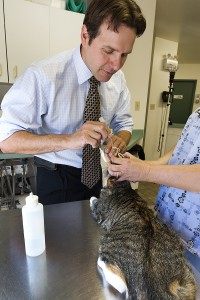 Garden City Cat Hospital’s services include surgery, general anesthetics and pain control. We are aware that even under the best of circumstances dropping a pet off for surgery is often a stressful event for most pet owners. So, we thought a behind the scenes tour of your pet’s day with us may help settle your nerves.
Garden City Cat Hospital’s services include surgery, general anesthetics and pain control. We are aware that even under the best of circumstances dropping a pet off for surgery is often a stressful event for most pet owners. So, we thought a behind the scenes tour of your pet’s day with us may help settle your nerves.
Most elective surgeries are scheduled for weekday mornings. Patients will be admitted in the morning between 8:00 and 8:30 am. If this time is not convenient, you are welcome to bring your pet in the evening before. Also for your pet’s protection, we recommend that all necessary vaccinations be up to date at least ten days prior to surgery.
Fasting – It is important to fast your pet before the surgery; having food in the stomach may cause your pet to vomit while under the influence of the anesthetic. During a general anesthetic your pet’s swallowing reflexes will be diminished; this will put him or her at risk of aspirating (inhaling) vomit into the lungs. This serious complication can be avoided by removing your pet’s food after 8:00 pm the evening before the surgery. It is okay for your pet to have water.
On the morning of the surgery you should plan to spend 15 to 20 minutes reviewing the surgical consent form and discussing the procedure with our team. This lets us address any important details of your pet’s condition and the procedure. The doctor will also perform a complete physical examination to identify any existing medical conditions that could complicate the procedure and compromise the health of your pet.
Pre-anesthetic Blood Testing – Because there is always the possibility that a physical examination alone will not identify all of your pet’s health problems, we strongly recommend that a pre-anesthetic profile (a combination of blood tests) be performed prior to anesthesia.
This blood test can be run in the clinic the morning of the surgery. The tests we recommend are similar to and equally as important as those your own physician would run if you were to undergo anesthesia. It is important to understand that a pre-anesthetic profile does not guarantee the absence of anesthetic complications. It may, however, greatly reduce the risk of complications as well as identify medical conditions that could require medical treatment in the future.
A normal blood test would confirm the health of your pet as well as give us a baseline to work with in the future. Because our older pets are more likely to have complicating diseases, this pre-anesthetic blood testing becomes mandatory in pets over eight years of age.
Once your pet has been admitted to the hospital he or she will have blood collected for the pre-anesthetic blood test and may be placed on intravenous fluids if required. Then your pet will be placed in an observation kennel with a blanket until the blood analysis is completed. A doctor will give the registered veterinary technician permission to begin the sedation process after interpreting the pre-anesthetic blood results.
Just before your pet is given any medication the heart rate, respiratory (breathing) rate and body temperature are checked. If these parameters are within normal limits an injection of sedative and pain medication is given. This injection usually takes 10 to 15 minutes to create sedation. Now your pet is ready for the anesthesia and surgery.
To anesthetize your pet, we first give an intravenous injection to cause a deep state of sleep. An endotracheal tube is then placed and secured into the airway. This protects the airway and delivers the oxygen and gas anesthetic that will keep the patient asleep during the surgery.
Once your pet is comfortably sleeping, a lubricant is placed in the eyes to keep them moist, the nails are trimmed and the surgical area is carefully shaved.
Once all the fur is removed from the surgical area pets are moved into the surgical suite.
A common complication of anesthesia is hypothermia (low body temperature). To avoid this, our patients are wrapped in towels, placed on a warming pad and are cushioned by warmed oat bags.
All pets are also monitored closely during their surgery by our registered veterinary technician. Your pet’s heart rate, respiratory rate, body temperature and blood oxygen levels are measured at regular intervals to ensure the safety of the patient. We may also measure your pet’s blood pressure and do an electrocardiogram if necessary.
The shaved surgical area is carefully washed and prepared for surgery in a sterile manner using special skin soaps and disinfecting solutions.
While this is occurring, the doctor is dressing and scrubbing for the surgery. A cap and mask are worn to cover the head and face; germs falling off the head or breathed into the incision could cause an infection. The surgeon’s hands and arms are scrubbed using a special skin disinfecting soap and are dried using sterile hand towels. The body is covered by a sterile surgical gown and gloves.
The surgeon covers the surgical area with sterile drapes and begins the surgical procedure using sterile instruments. All the while the registered veterinary technician continues to monitor the vital statistics of the anesthetized patient.
After the surgery is complete, the anesthetic is turned off. We continue to deliver oxygen to your pet through the endotracheal tube for 5 to 10 minutes to help the body recover. The area around the incision is cleaned of the soaps and a bad tasting disinfectant is spread onto the incision to avoid pets from licking the area when they have woken up.
Your pet is then moved back into his or her observation kennel for recovery. He or she is wrapped in fresh blankets and the oat bags are reheated. Preventing and treating pain is an important responsibility. Not only does it make our patients more comfortable, but preventing pain speeds the healing process. We use a combination of narcotic and anti-inflammatory pain medications tailored to the individual’s needs, health status and type of surgical procedure that was performed.
Most pets are lifting their heads within 10 minutes and standing up with in an hour of completion of the surgery.
We understand that you eagerly await news of your pet’s surgery, so once your pet has safely recovered from the anesthetic, our receptionist will call to give you an update.
Throughout the day we will continue to monitor our post-surgical patients for comfort as they regain their balance and strength. While many people are concerned their pet will be stressed and barking, most rest peacefully, napping most of the day.
Within a few days of your pet’s discharge from the hospital, we will follow up with you by telephone to ensure that your pet is continuing to have a comfortable recovery at home.
Radiography (X-rays)
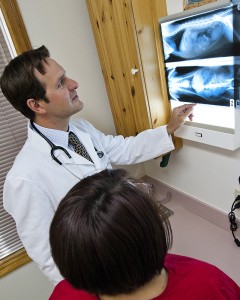 Our X-ray equipment allows us a peak inside your pet’s body to look for more than just bone problems.
Our X-ray equipment allows us a peak inside your pet’s body to look for more than just bone problems.
We can also look for the foreign objects he or she may have swallowed, tumours, assess organ size, shape and texture, and look for bladder, gall and kidney stones.
Ultrasound
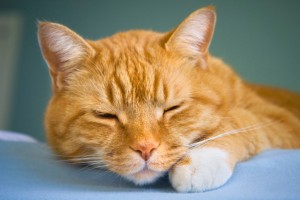 Sometimes an X-ray may not give us a clear enough view of the inside of your pet’s body; we may want to view the problem from a different perspective to obtain a diagnosis. In this case we can call into our hospital a traveling ultrasonographer.
Sometimes an X-ray may not give us a clear enough view of the inside of your pet’s body; we may want to view the problem from a different perspective to obtain a diagnosis. In this case we can call into our hospital a traveling ultrasonographer.
Many pets tolerate the ultrasound procedure quite well; occasionally a more nervous pet may require a light sedation. If we see something on the ultrasound that is unusual we may choose to take a sample of tissue; to do this a general anesthetic is required. The ultrasound is performed and interpreted by a licensed veterinarian who has a special interest and is experienced in this technology. We will have the results of the ultrasound within minutes of completing the test.
Electrocardiogram (ECG)
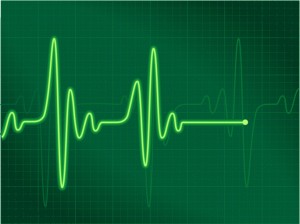 An electrocardiogram measures the electrical impulses of the heart. Changes in these electrical impulses can be caused by electrolyte imbalances, respiratory disease, cancer, trauma and heart disease.
An electrocardiogram measures the electrical impulses of the heart. Changes in these electrical impulses can be caused by electrolyte imbalances, respiratory disease, cancer, trauma and heart disease.
With our ECG we can determine if your pet’s heart is beating in the correct rhythm, and if not, why. We also have the ability to send your pet’s ECG via modem to a cardiologist for an expert’s opinion.
Pulse Oximetery Monitor
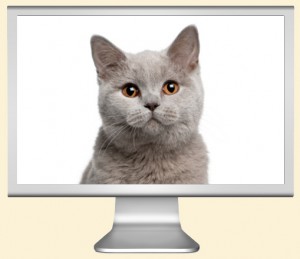 A pulse oximeter is a specialized computer that monitors an animal’s heart rate and blood oxygen levels.
A pulse oximeter is a specialized computer that monitors an animal’s heart rate and blood oxygen levels.
Animals with problems breathing or under a general anesthetic may not be breathing in enough oxygen; this computer can measure the oxygen level in the blood and alarm us if there is a problem. Supplying an animal in respiratory distress with nasal oxygen or altering the oxygen levels for a patient under anesthetic can be life saving.
Intravenous Fluid Pump
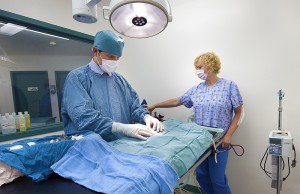 Sometimes patients need to be hospitalized due to dehydration. These patients require intravenous fluids to treat this potentially life threatening condition. Despite the obvious benefits of receiving intravenous fluids, too much fluid delivered too quickly can also be dangerous.
Sometimes patients need to be hospitalized due to dehydration. These patients require intravenous fluids to treat this potentially life threatening condition. Despite the obvious benefits of receiving intravenous fluids, too much fluid delivered too quickly can also be dangerous.
Our intravenous fluid pump is calibrated to give an exact preset amount of fluid at a specified rate of delivery. With this little pump, we can never give your pet too much fluid. The pump also has a built in alarm system to alert us if there is a kink in the line and the patient is not receiving enough fluid.
Microchipping Pet Identification
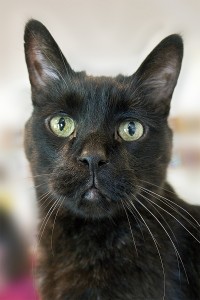 Sadly, thousands of pets are lost or stolen every year and more than 70 percent of those never come home. Thirty-three percent of pets will get lost at least once in their lifetime. A tiny microchip may be the difference between lost and found.
Sadly, thousands of pets are lost or stolen every year and more than 70 percent of those never come home. Thirty-three percent of pets will get lost at least once in their lifetime. A tiny microchip may be the difference between lost and found.
A microchip is a tiny computer chip with a programmed identification number. It is injected by a veterinarian into your pet, under the loose skin over shoulder blades. The procedure is simple and no more painful than a vaccination. The chip remains inert until a special scanner is passed over it to read the identification number. The chip identification numbers are filed with a national registry that is accessible 24 hours per day and 365 days a year. All humane societies, animal shelters and veterinary hospitals are equipped with scanners. Through this system lost pets can be quickly reunited with their families. Microchipping is the only way to provide a permanent, non-alterable or easily removable means of identification that cannot be lost or fade with time.
